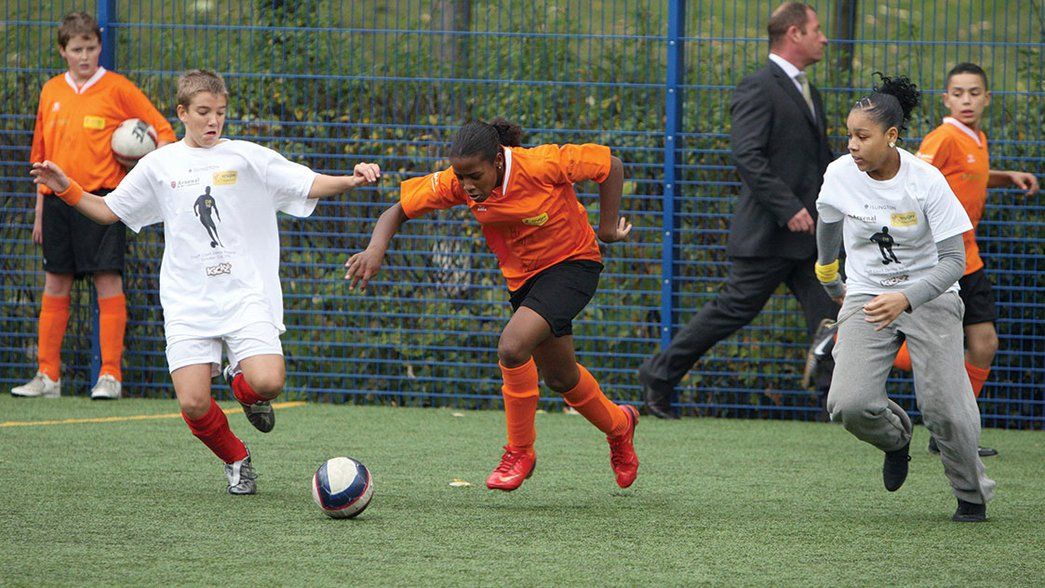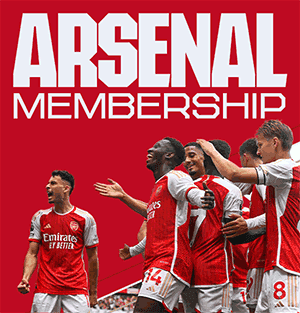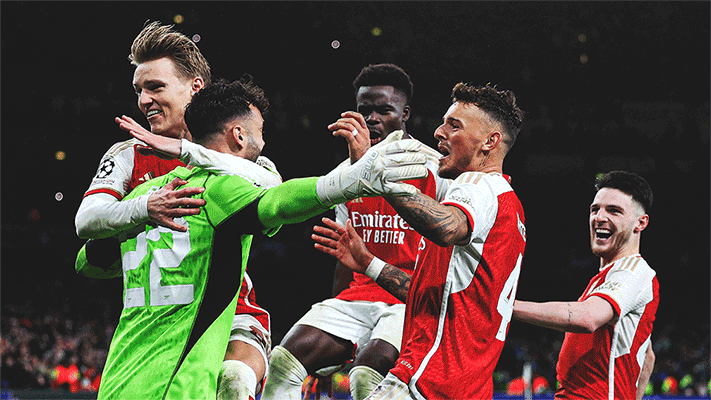Islington is like a microcosm of London, where pockets of great affluence rub up against areas of poverty and social deprivation.
Islington is also incredibly urbanised, and the near-total lack of green space and open-play facilities in the borough led to the development of a number of small community gardens on new housing estates across the borough as far back as the 1970s. These included Elthorne Park at the north end of Hornsey Road, a mile and a half up the road from Arsenal’s Emirates Stadium.
By the time the club was building its new ground in the early 2000s, Elthorne Park had been causing concern for years. Crime, drug use and anti-social behaviour were on the rise, and it didn’t help that the park’s football pitch was so neglected that the pitch was unsafe in the wet and the floodlighting rarely worked. This was not the sort of place where young people could enjoy sport.
Kicking off
Something had to be done, because Elthorne Park is the only local park for a huge number of children from many diverse backgrounds. Any football pitch, however worn down, provides a vital place for young people to play football, a sport that can bring them together and give them a focus and a release from other aspects of life.
It was just at this time that the Premier League Kicks programme was getting underway as a pilot project in London between the Premier League and the Metropolitan Police, with a vision to “build safer, stronger, more respectful communities through the development of young people’s potential”. The aim was to use football to bring communities together and engage with young people who were “difficult to reach” and to create opportunities for their own personal development.
This launch enabled Arsenal to begin their first Kicks programme in Elthorne Park in 2006, and the scheme was so successful that it soon expanded to four nights of football and an additional Friday night boxing session at the Islington Boxing Club on the southern edge of the park.
Despite the poor condition of the park, the puddles and the lack of lighting, over the following two years the Arsenal in the Community Kicks team turned up four nights every week to run open-access football sessions for local people.
Starting small, with boys and girls from the surrounding estate, the regularity of sessions and the attendance of the same staff, night after night, week after week, meant that the participants were able to begin to build mutually respectful relationships with Arsenal coaches who were from the same types of background and who shared similar interests.
Within a year or two the Kicks project was also organising dance and girls-only sessions, along with opportunities to participate in other activities such as residential trips, bowling, photography and cinema visits. Other activities followed including formal and informal workshops around personal safety, guns, knives and fireworks.
The Kicks project quickly expanded to a second site at Rosemary Gardens in Islington and began supporting the work of other local groups including the Canonbury Youth Project, which worked with young people in Islington and Hackney. Many of these youngsters had been involved in territorial disputes and by working together, mainly by participating in training and football matches, they helped break down many of the barriers that had prevented them from communicating.
Pitch perfect
The poor condition of the pitch at Elthorne Park was well known, and Islington Council had earmarked its redevelopment as part of a programme to improve run-down and largely ignored green-space areas. It was Arsenal that led the way, however, when Dennis Bergkamp pledged €100,000 from his own testimonial after he retired from playing in 2006.
He approached The Cruyff Foundation, which was set up in 1997 and had installed more than 80 pitches across Europe to ensure young people in poor areas had access to good-quality sports facilities, in the hope that one could be installed at Elthorne Park. Islington Council contributed a further £182,000, which helped pay for a basketball pitch alongside the other improvements. Further funding became available from other sources to replace fencing around both the football and basketball courts.
The resulting Cruyff Court was opened in 2008, on time and within budget. It was the first Cruyff Court in the UK and had taken 16 weeks to build. Bergkamp, who attended the opening with Johan Cruyff himself and then-Arsenal player Robin van Persie, said, “I hope this Cruyff Court can bring as much joy to the youngsters playing football as I had when I played.”
And as one Kicks participant says, “I can see why it’s important to have positive role models and people to look up to. I hope I can be a positive influence in young people’s lives as you have been on mine.”
Beyond Kicks
Arsenal in the Community built on Kicks by delivering a Future Jobs Fund scheme that worked with three young people from the Elthorne Park area, providing them with one-year paid apprenticeships, and the Arsenal Mentoring Programme for high-risk young offenders.
Young people from the Kicks programme were also encouraged to apply for a £1,000 Youth Initiative Grant – and they then delivered a gang prevention project to their peers – and there was also a Youth Engagement team that focused on long-term crime reduction.
What has become clear down the years is that the Kicks programme starts with football but goes way beyond football.
In the words of John Sutherland, who worked closely with the club at Elthorne Park and on Kicks as Operations Superintendent of Islington Police before going on to become Metropolitan Police Borough Commander of Camden, “If I had my time over again I would do it again. If I could I would put more resources into it, rather than less.
“We live in a world that is hugely impatient and short-term. We want fast food and fast broadband and we get grumpy if we have to wait more than two minutes for a bus. Nobody seems to have the time or the tolerance, never mind the money or the resources, to invest in anything that takes time.”
But that is exactly what Arsenal in the Community has done. Because we are “always there”, we have earned the trust and respect of the community and recognition from strategic partners that we offer something more than a tracksuit and bag of balls.
“There’s a lot of ambition within the young people here” – read Shawdon’s case study here
Copyright 2024 The Arsenal Football Club Limited. Permission to use quotations from this article is granted subject to appropriate credit being given to www.arsenal.com as the source.










